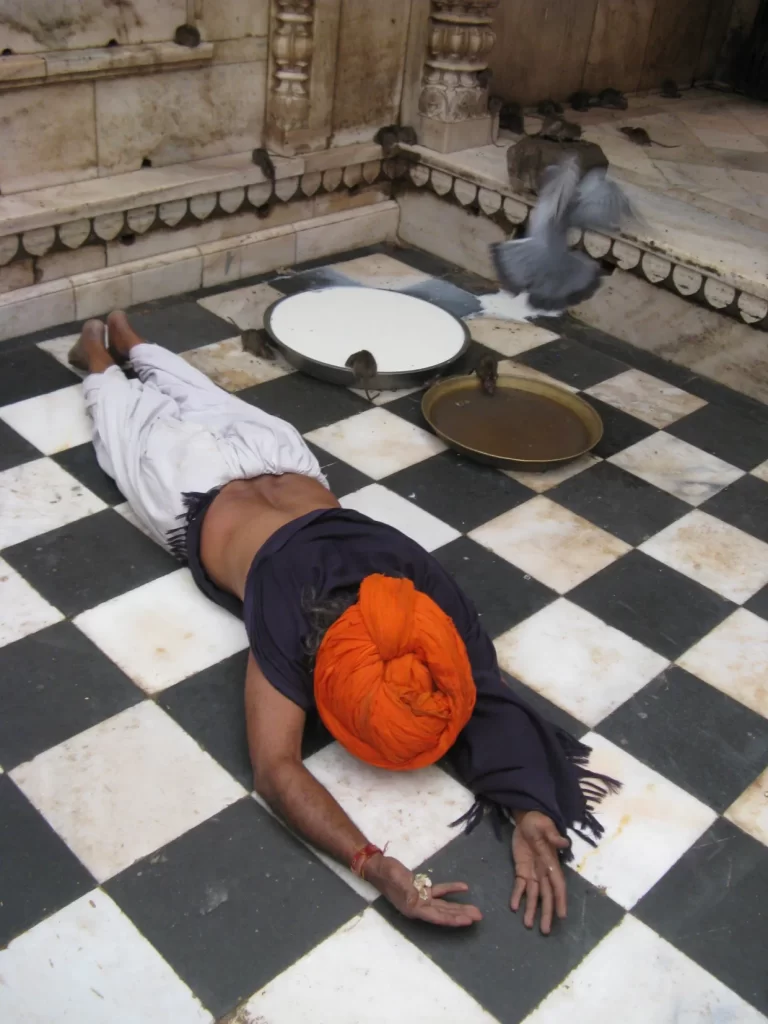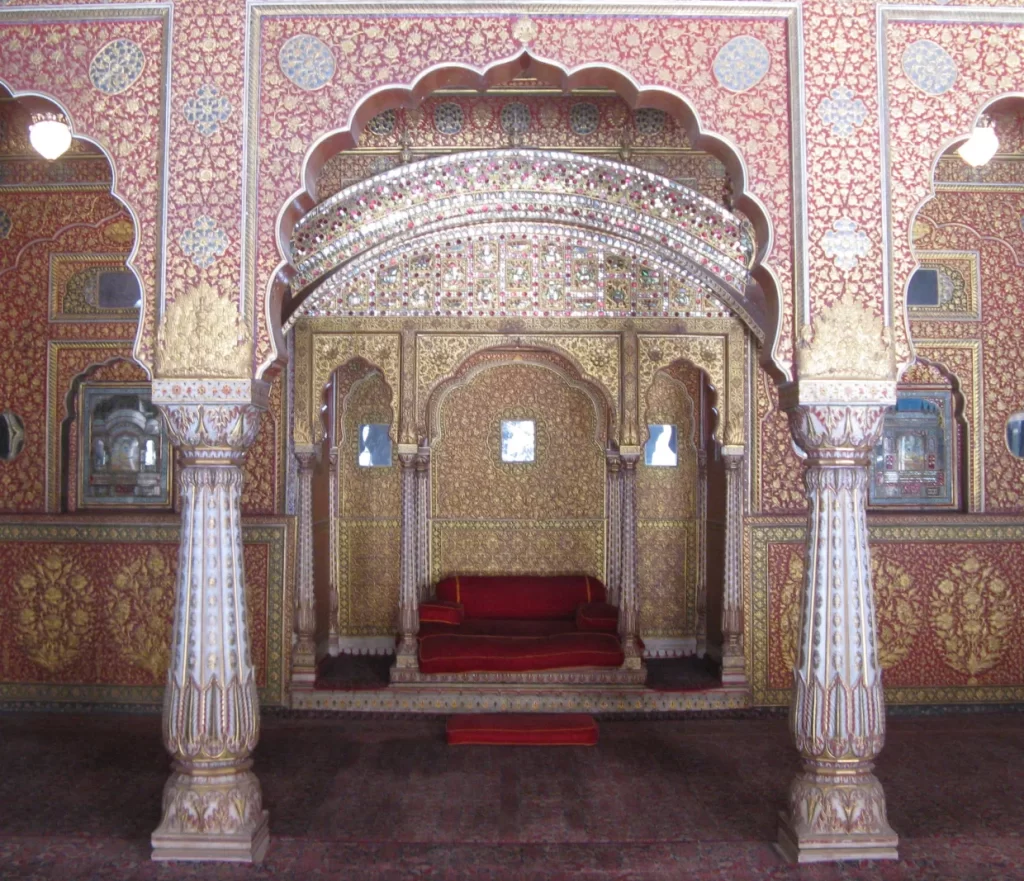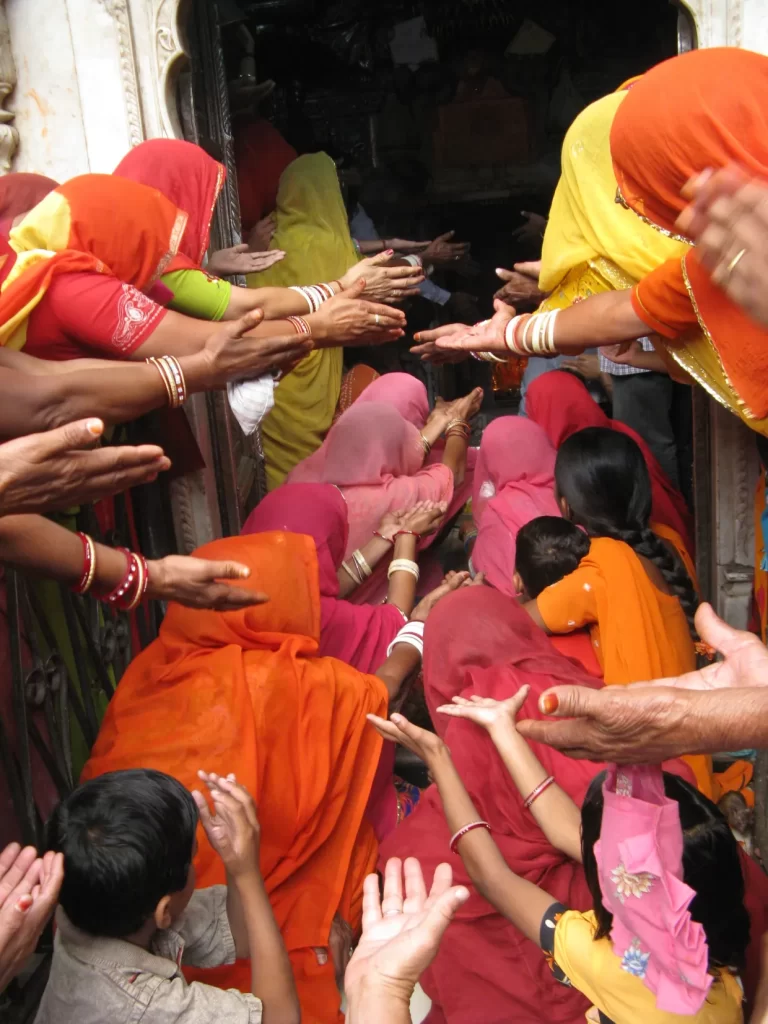White Rat in India

I travel to tumble down the rabbit hole. I don’t want a predictable world. I don’t want to say that this city reminds me of that one. I want to be unbalanced. Feel lost.
It is a feeling completely other to the disorientation suffered by so many who have stumbled into a dark, confounding tunnel during this pandemic. And Alice is still plunging.
Amidst the fear, there is also hope.
The fall will end. Life will continue to be layered and lived. Challenges ahead may seem less overwhelming. In the words of Alice, “after such a fall as this, I shall think nothing of tumbling down the stairs!”
That is no small thing.
But for now, as we fall down, down, down, I think of other adventures and Wonderlands that waited for me at the end of dark tunnels.
I recall a long night on a dark train in India. My sweat soaked clothes stuck to me. Bodies littered the space around me. Small children’s wails lacerated dreams. The stench was a weight in the air. The space enclosed me like a coffin. I tried to sleep. Then I settled for just trying to breathe.
We fell down, down, down.
Then, in the pre-dawn darkness, I alighted from the train with a soft thump, and the fall was over.
I brushed myself off and looked around. The western desert station in Bikaner emanated horror-movie menace. There may have been a flickering light bulb. I don’t recall.
After three months in India, I was accustomed to stepping gingerly over strewn bodies on platform floors. And I was resigned to the riot of traders and swindlers that stalked my every step. However, loitering at the railway exit I felt the wariness that hovers over night-time travelers in dimly lit stations the world over. The transitory flurry caused by the train’s arrival had settled, and I had waved off the swarm who had bid to bundle me into the back of a rickshaw. When it was clear that I wasn’t bargaining, the rabblel backed off to watch what I’d do next. I waited. It wasn’t terribly exciting, but I was the only show in town.
The night lightened and still my ride didn’t show. A family with three youngsters stirred on the pavement in front of the station where they had spent the night. The mother shifted the infant in her arms and breast-fed the child. The older boys sat up grimly, neither looking to be fed or petted. Their eyes fixed straight ahead, haggard and hopeless.
I had travelled to Bikaner in Rajasthan to visit the city’s renowned rat temple. The creatures horrify me, but I was drawn to the idea like the sight of a car crash. I thought it might help me understand how a rat in India can rise to the status of a god, while a child in the same country can sleep in the sewers.
By the time a car screeched up and my apologetic host fussed profusely, even the traders had lost interest in me.
Some convoluted explanation was provided, which distilled down to the simple fact that I had been forgotten. It didn’t matter. The sun, even at this early hour, was parching my skin. I was heading to shade, a shower, and a bed.
I wasn’t ready for my encounter with crazy, so I stalled my departure to the temple and rested up out of the glare in my host’s home on the edge of a town that has built its tourism trade around the 16th century Junagarh Fort, camel safaris, and a fetish with rats.
The rat temple is dedicated to Karni Mata, a 14th century mystic who was believed to be the reincarnation of the Hindu goddess Durga, the supreme mother and creative life-force. Unsurprisingly, several legends surround the reason for worshiping the 20,000 or so sacred rats, known as kabas. It is said that Karni Mata attempted to bring back to life the son of a grieving storyteller, who was one of her clansmen.

However, Yama, the god of death, refused to restore the child, claiming that it was too late as his soul had already been reincarnated. The mystic and the god then came to an agreement that all of Karni Mata’s tribe would be reincarnated as rats, under her protection, until they could be reborn into her clan.
During my time in India, I had become quite the temple aficionado. I rang the bell on entering to wake the gods. I watched the priests dress figurines in the morning and dab their plastic bodies in rose-scented water. I had saffron and rice daubed on my forehead.
And now, done with flirtations, I was intent on getting down and dirty in the fabled Karni Mata Temple, where, if my planets aligned, I might spot a rare white rodent, considered most auspicious, amidst the grisly brown swarm that ran rampant.
I took a bus to the small town of Deshnoke, about 30 km from Bikaner. Hawkers selling rat treats had set up stalls outside the temple. Passing under the ornate eaves and through the solid silver doors, an excited crowd surged forward. I held back, in no hurry for whatever might present itself.

Pausing before the breach, the building was well worth a moment. It was built by Maharaja Ganga Singh in the early 1900s. The rats’ royalty status was reflected in the gilded gates and marble façade. But for all the embellishment, there was no escaping the fact that what we had here was a horror load of rats. The sour smell of well-fed vermin rose like a smoke signal, while netting covered the open courtyard to protect them from birds of prey.
I didn’t need to be told twice to watch where I was walking, but aside from the desire to avoid stomping on a critter I was warned that a false foot leading to a dead rat would mean that I would have to replace it with a gold rat effigy. I inched forward.
It was like entering a 19th century pleasure den. Plumb fellows lolled stupidly in shaded corners, sated with sweets, milk and ground nuts. Twirling their whiskers, others languished on fret-work railings, which acted as sofas over which they draped their huge balls. At any moment, I expected to see paunches patted, whisky poured, and cigars produced.
In the meantime, temple guardians topped up bowels of milk, which they placed at scattered intervals across the floor. Barely deigning to glance at the subjects, who prostrated themselves on the filthy floor, rats gathered around the rim and lapped up the nectar.
Many of the devotees who had travelled with their families had come great distances. Their excitement was colourful, noisy and infectious. Youngsters were encouraged by their parents to poke the rats, which appeared to be far too replete to mind. Bare feet were shamelessly flouted in the hope that a rat would run over them, as this was considered extremely lucky. Skittish children, who had the good sense to skip out of the way if a livelier fellow looked set to cross their path, were given admonishing looks and encouraged to overcome their aversion by offering the offended soul some sweets.
Believers sat on the floor between the railings which led to the inner sanctum that held the image of the deity, and where the priests conducted their rituals and handed out Karni Mata’s ‘Prasad’. This is the leftover nibbles that the rats first sample before the believers are lucky enough to finish the job. It is, quite literally, the food of the gods, and considered sanctified. I declined, in the belief that avoiding plague would be blessing enough.
Arms crossed, feet covered, smile strained, I felt like the only sober person at the party. Then the excitement racked up another notch. A temple guardian hurried over and led me to where a group was gathered around a hole in the temple wall. A white rat had been spotted. Elation mingled with tension. The subject of all the attention refused to bolt from its hole. Treats were waved in whiffing distance of its trembling snout. Bodies pressed closer. I found myself as anxious as anyone to catch a glimpse of its snowy face.
It was slow, it was nerve wrenching but, eventually, the quivering ancestor made a brief appearance to perform a snatch and grab. The supplicants went wild. I admit, I was carried by the euphoria. “A white rat!” I heard myself gasp. Someone must have spiked my drink.
In India, anything is possible. Therein lies its lure. It cannot be defined by experience or expectations; nor will it limit itself to boundaries. In India, a child will scavenge in filth; while at another table, a rat will dine like a lord. There is no end to the horror one can encounter; equally, there is no border to this Wonderland.
© Róisín Sorahan
Toots Book Reviews
For reviews, discussion and more on Time and the Tree, click here.